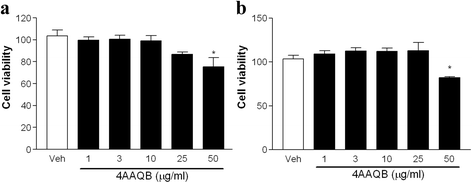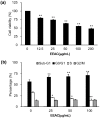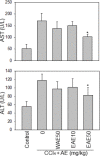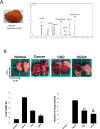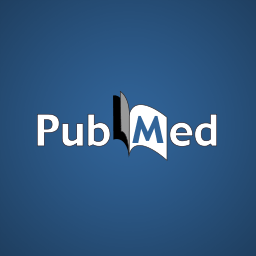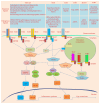Antrodia cinnamomea is an indigenous medicinal mushroom in Taiwan, commonly used for the treatment of cancers and inflammatory disorders. 4-acetylantroquinonol B (4AAQB) is one of the active component isolated from the mycelium of A. cinnamomea. However, whether 4AAQB exhibits anti-inflammatory effect is not clear.
Health News
The purpose of this study was to investigate the inhibitory activities of ethanolic extracts from Antrodia cinnamomea (EEAC) on lung cancer. Cell proliferation and cell cycle distribution were analyzed using (3-(4,5-Dimethylthiazol-2-yl)-2,5-diphenyltetrazolium bromide) (MTT) assay and flow cytometry, respectively. Wound-healing assay, Western blotting, and a murine tumor model were separately used to examine cell migration, protein expression, and tumor repression. Our results showed that EEAC induced cell cycle arrest at the G0/G1 phase resulting decreased cell viability in A549 cells. Moreover, EEAC up-regulated the growth-suppressing proteins, adenosine 5′-monophosphate-activated protein kinase (AMPK), p21 and p27, but down-regulated the growth-promoting proteins, protein kinase B (Akt), mammalian tarfet of rapamycin (mTOR), extracellular signal-regulating kinase 1/2 (ERK1/2), retinoblastoma protein (Rb), cyclin E, and cyclin D1. EEAC also inhibited A549 cell migration and reduced expression of gelatinases. In addition, our data showed that tumor growth was suppressed after treatment with EEAC in a murine allograft tumor model. Some bioactive compounds from EEAC, such as cordycepin and zhankuic acid A, were demonstrated to reduce the protein expressions of matrix metalloproteinase (MMP)-9 and cyclin D1 in A549 cells. Furthermore, EEAC enhanced chemosensitivity of A549 to paclitaxel by reducing the protein levels of caveolin-1. Our data suggests that EEAC has the potential to be an adjuvant medicine for the treatment of lung cancer.
Antrodia cinnamomea (AC) is found with anti-inflammatory and immunomodulatory biological activities. In this study, we investigated the anti-hepatitis effect of the emulsified AC extract from RO water or supercritical fluid CO2 with ethanol co-solvent extract methods of AC preparations.
Skeletal muscle atrophy, the most characteristic feature of cancer cachexia, often occurs in patients with cancer undergoing chemotherapy. Antrodia cinnamomea (AC) a widely used edible medical fungus, exhibits hepatoprotective, anti-inflammatory and anticancer activities. In this study, we investigated whether combined treatment with the ethonolic extract of AC ameliorates cachexia symptoms, especially muscle wasting, in lung tumor-bearing mice treated with chemotherapy. Our results revealed that gemcitabine and cisplatin-induced severe body weight loss and skeletal muscle atrophy in the mice with cancer were greatly attenuated after AC extract administration. The protection may be attributed to the inhibition of skeletal muscle proteolysis by suppressing myostatin and activin release, muscle wasting-related FoxO3/MuRF-1/MAFbx signaling, proteasomal enzyme activity, and pro-inflammatory cytokine production. A significant decrease in insulin-like growth factor 1 (IGF-1) expression and formation was observed in the atrophying muscle of the conventional chemotherapy treatment group (CGC), and this decrease was markedly reversed by AC treatment. Additionally, the anorexia, intestinal injury and dysfunction that occurred in the CGC group were mitigated by AC extract. Taken together, these results demonstrated that the AC extract has a protective effect against chemotherapy-induced muscle atrophy mainly by attenuating muscle proteolysis, pro-inflammatory cytokine production, and anorexia, and activating IGF-1-dependent protein synthesis.
Antrodia cinnamomea (AC) is a medicinal fungal species that has been widely used traditionally in Taiwan for the treatment of diverse health-related conditions including cancer. It possesses potent anti-inflammatory and antioxidant properties in addition to its ability to promote cancer cell death in several human tumors. Our aim was to improve the anticancer activity of AC in hepatocellular carcinoma (HCC) through its cocultivation with ginger aiming at tuning the active ingredients. HCC cell lines, Huh-7 and HepG2 were used to study the in vitro anticancer activity of the ethanolic extracts of AC (EAC) alone or after the cocultivation in presence of ginger (EACG). The results indicated that the cocultivation of AC with ginger significantly induced the production of important triterpenoids and EACG was significantly more potent than EAC in targeting HCC cell lines. EACG effectively inhibited cancer cells growth via the induction of cell cycle arrest at G2/M phase and induction of apoptosis in Huh-7 and HepG2 cells as indicated by MTT assay, cell cycle analysis, Annexin V assay, and the activation of caspase-3. In addition, EACG modulated cyclin proteins expression and mitogen-activated protein kinase (MAPK) signaling pathways in favor of the inhibition of cancer cell survival. Taken together, the current study highlights an evidence that EACG is superior to EAC in targeting cancer cell survival and inducing apoptotic cell death in HCC. These findings support that EACG formula can serve as a potential candidate for HCC adjuvant therapy.
Taiwanofungus camphoratus is a precious medicinal fungus endemic to Taiwan and has been used as traditional medicine for a long time. Many pharmacological studies have revealed that T. camphoratus possessed various biological activities, such as immunomodulatory effects, anticancer activity and liver protective function. The aim of this study is to investigate the non-specific and antigen (ovalbumin [OVA])-specific immunomodulation effects of solid-state cultivated powder of T. camphoratus (Leader Antrodia cinnamomea [LAC]) in BABL/c male mice. In non-specific and antigen-specific immune function studies, 8-week-old mice were orally administered with LAC for 6 and 8 weeks, respectively. The results have shown that the proliferation of splenic immune cells, phagocytic activity of macrophages and cytolytic activity of natural killer cells were enhanced by LAC. Additionally, LAC increased the levels of IL-2, TNF-α, INF-γ, GM-CSF and serum OVA-IgG and OVA-IgM. These findings provided evidences that LAC had the immunomodulation effects on both antigen-specific and non-specific immune responses in mice.
Nanoencapsulated triterpenoids from petri dish-cultured Antrodia cinnamomea (PAC) and its amelioration effects on reproductive function in diabetic rats were investigated.
Antrodia cinnamomea (AC), an edible fungus growing in Taiwan, has various health benefits. This study was designed to examine the potential inhibitory effects of AC oligosaccharides on lipopolysaccharide (LPS)-induced inflammatory responses in vitro and in vivo. By trifluoroacetic acid degradation, two oligosaccharide products were prepared from AC polysaccharides at 90 °C (ACHO) or 25 °C (ACCO), which showed different oligosaccharide identities. Compared to ACCO, ACHO displayed better inhibitory effects on LPS-induced mRNA expression of pro-inflammatory cytokines including IL-6, IL-8, IL-1β, TNF-α and MCP-1 in macrophage cells. Further, ACHO significantly suppressed the inflammation in lung tissues of LPS-injected C57BL/6 mice. The potential anti-inflammatory molecular mechanism may be associated with the promotion of protein O-GlcNAcylation, which further skewed toward the marked suppression of p38 and Akt phosphorylation. Our results suggest that the suppressive effect of AC oligosaccharides on inflammation may be an effective approach for the prevention of inflammation-related diseases.
Esophageal cancer is associated with a high mortality rate and easy metastasis. The aim of this study is to investigate the effect of the bio-product Antrodia cinnamomea mycelial fermentation broth (AC-MFB) on the epithelial mesenchymal transition (EMT) of human esophageal cancer cells and the molecular mechanisms underlying these effects. Transforming growth factor β (TGF-β) was used to induce EMT in human esophageal BE3 cancer cells. Changes in cell morphology and migration potential were examined. The expression of E-cadherin, N-cadherin, vimentin, and other transcriptional factors was studied by western blot assay. The results showed that AC-MFB was not only able to upregulate the expression of Ecadherin and attenuate the TGF-β-induced overexpression of vimentin and N-cadherin, but it also reversed the TGF-β-induced changes in cell morphology from polygonal to spindle-shaped and delayed the migration potential of BE3 cells. Furthermore, AC-MFB treatment was able to inhibit the expression levels of both Twist and Twist1. Overall, AC-MFB was able to inhibit the EMT of esophageal cancer BE3 cells, which was accompanied by Twist and Twist1 downregulation.
The medicinal mushroom Antrodia cinnamomea has been used to treat cancer but its anti-angiogenic effects have not been studied in detail.
Insulin resistance is a major factor in type II diabetes development, occurring when insulin levels are normal, but do not have normal interactions with adipose, muscle or liver tissue. The present study aimed to explore the hypoglycemic effect of Antrodia cinnamomea (AC) mycelium powder by evaluating its impact on insulin resistance and plasma free fatty acid (FFA) levels in steroid‑induced insulin‑resistant (SIIR) rats. Male Wistar rats were administered dexamethasone for 5 days to induce insulin resistance. The SIIR rats were subsequently randomly assigned into three experimental groups (EGs) and a control group (CG), where saline was orally administered. The EGs were orally administered different doses of AC (100, 200 or 500 mg/kg) and an optimal dose for further study was determined. Changes in plasma insulin and glucose levels were calculated to investigate the hypoglycemic effect of AC. To evaluate insulin resistance, the homeostasis model assessment‑estimated insulin resistance of the SIIR rats was determined. Changes in plasma FFA levels were detected and levels of insulin signal proteins (IRS‑1, GLUT‑4 and PI3K) were analyzed by western blot to elucidate AC’s mechanism of action. The SIIR rats exhibited significantly decreased plasma glucose levels in the first 30 min, with plasma FFA levels displaying a marked downward trend (P<0.05) when they were administered the optimal dose of AC (200 mg/kg). The decrease in plasma glucose and FFA levels was significantly larger in the EG compared to the CG, and insulin signal protein levels were also significantly increased (P<0.05). The hypoglycemic effect observed may be due to decreased plasma FFA levels and increased expression of intracellular insulin signal proteins. Furthermore, insulin sensitivity was enhanced, indicating that AC acts as an insulin sensitizer in insulin resistant animal models.
Psoriasis is a chronic inflammatory autoimmune disease that can be initiated by excessive activation of endosomal toll-like receptors (TLRs), particularly TLR7, TLR8, and TLR9. Therefore, inhibitors of endosomal TLR activation are being investigated for their ability to treat this disease. The currently approved biological drugs adalimumab, etanercept, infliximab, ustekinumab, ixekizumab, and secukizumab are antibodies against effector cytokines that participate in the initiation and development of psoriasis. Several immune modulatory oligonucleotides and small molecular weight compounds, including IMO-3100, IMO-8400, and CPG-52364, that block the interaction between endosomal TLRs and their ligands are under clinical investigation for their effectiveness in the treatment of psoriasis. In addition, several chemical compounds, including AS-2444697, PF-05387252, PF-05388169, PF-06650833, ML120B, and PHA-408, can inhibit TLR signaling. Although these compounds have demonstrated anti-inflammatory activity in animal models, their therapeutic potential for the treatment of psoriasis has not yet been tested. Recent studies demonstrated that natural compounds derived from plants, fungi, and bacteria, including mustard seed, Antrodia cinnamomea extract, curcumin, resveratrol, thiostrepton, azithromycin, and andrographolide, inhibited psoriasis-like inflammation induced by the TLR7 agonist imiquimod in animal models. These natural modulators employ different mechanisms to inhibit endosomal TLR activation and are administered via different routes. Therefore, they represent candidate psoriasis drugs and might lead to the development of new treatment options.
In the present study, we investigated the effects of antrodin C (ADC), a maleimide derivative isolated from mycelia of Antrodia cinnamomea, on high glucose (HG, 30 mM)-accelerated endothelial dysfunction in vitro. HG-induced cytotoxicity in human umbilical vein endothelial cells (HUVECs) was significantly ameliorated by ADC. In addition, treatment with ADC significantly prevented HG-induced senescence, growth arrest at the G1-S transition phase and apoptosis in HUVECs. Moreover, the increased level of intracellular reactive oxygen species (ROS) under HG condition was significantly ameliorated by ADC. Further analysis revealed that ADC-mediated anti-oxidant effects were due to up-regulation of cellular anti-oxidant genes, such as HO-1 and NQO-1 via promotion of the transcriptional activity of Nrf2, which was further confirmed by the failure of ADC to protect HUVECs from HG-induced dysfunction under HO-1 inhibition or Nrf2 silencing. Furthermore, hyperosmotic glucose (HOG, 60 mM)-induced uncontrolled production of ROS, rapid apoptotic cell death and HUVEC injury were significantly prevented by ADC, whereas these preventive effects were barely observed in HO-1 inhibited or Nrf2 silenced cells. Taken together, these results suggest that ADC may represent a promising intervention in diabetic-associated cardiovascular diseases by activating the Nrf2-dependent cellular anti-oxidant defense system.


